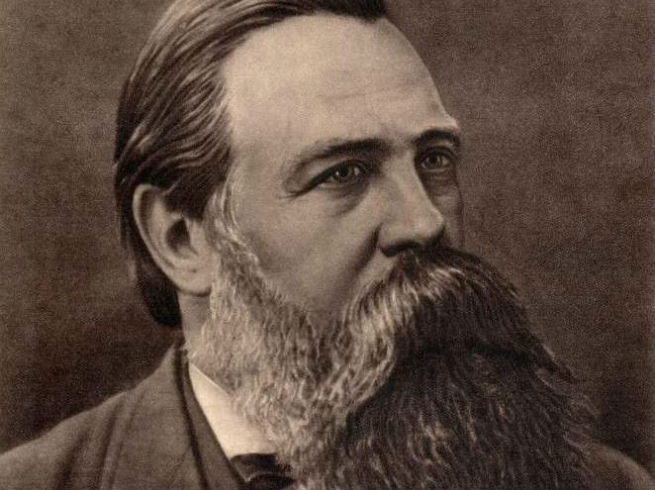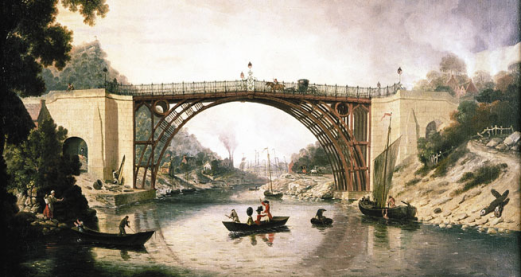How did we come to have an idea of a sudden “Industrial Revolution” in Britain, dating from the late eighteenth century? It’s a question well worth asking, not least because of the issues that this concept has raised among historians.
As a model, it is a good fit for the vicinity of Manchester, but not Birmingham, with its older industrial development. It reflects the rise of the factory system and Watt’s steam engine, but draws attention away from the progress of craft industries for many years beforehand.
Eighteenth-century writers such as Joshua Gee, Adam Smith, and Adam Anderson recognised the earlier rise of manufactures (see A Gradual Revolution?). So how did such perceptions come to be marginalised?
 Thomas Percival
Thomas Percival
First sightings
The first intimations of a new account of industrial history can be found in public discussions during the 1780s. There was a fascination with the recent take-off of the cotton mills, which tended to be discerned in two ways: the steep rise in exports of cotton goods and imports of raw cotton, and the new technologies used in the cotton manufacture.
For example, in a passage added to Anderson’s The Origin of Commerce in 1789, the journalist William Combe wrote that “some years previous to this period, an event happened which portended a considerable revolution in the manufactures of Great Britain. This was the invention of Mr Arkwright’s celebrated machine, which is so aptly constructed, and so judiciously planned, that with one great water wheel, above 4000 threads of cotton yarn are spun at once, of which the finest muslins are manufactured.”
It is worth noting that the word “revolution” was already being used. Also this was framed in national terms, an example of the widespread national rhetoric in the economic culture of the time – for Combe, it was a revolution not just in a locality, but in “Great Britain”.
The war years
After this flurry of interest, there was a complicating factor – the wars with France, into which Britain was drawn between 1793 and 1815. There were recurring fears that the wars would hinder or distort the economy. But the advance of British manufactures proved resilient, and this came to be seen as one of the key foundations of victory.
Patrick Colquhoun, who had been one of the first to study the rise of the cotton manufacture in the 1780s, wrote in 1814 that
“it is impossible to contemplate the progress of manufactures in Great Britain within the last thirty years without wonder and astonishment. Its rapidity, particularly since the commencement of the French revolutionary war, exceeds all credibility. The improvement of the steam engines, but above all the facilities afforded to the great branches of the woollen and cotton manufactories by ingenious machinery, invigorated by capital and skill, are beyond all calculation…”
We can see here the same selective emphasis on the cotton manufacture (with a mention of the woollen as well), and a patriotic link with national terminology in the phrase “Great Britain”. By this stage, there was also a new symbol of progress: “the improvement of the steam engines”.
The war years saw the beginnings of another agenda that focused attention on the cotton mills: the concern about working conditions in factories. An early sign of this was the efforts of Manchester doctor Thomas Percival to secure reforms at a local level in 1796; and this quickly became a national issue politically, with the first Factory Act being passed by Parliament in 1802.
A broader critique, linking the rise of manufactures with the selfish individualism of the market, could be seen in a piece by the poet Robert Southey for the Quarterly Review in 1812. He claimed that
“the character of the lower orders underwent very little change from the Reformation till within the last forty years… But during the last forty years, a tremendous change has been going on; it has affected all classes, few for better, the lowest and most numerous much for the worse”.
He continued:
“one chief cause of this moral revolution, for such it may truly be called, is to be found in the improvement of machinery, and the consequent rapid increase of manufactures. The manufacturing system has been carried among us to an extent unheard of in any former age or country”.
This was another example of the word “revolution” being linked with a sudden industrial advance since the late eighteenth century. He added that “Adam Smith’s book is the code, or confession of faith of this system”, linking the starting-point with the publication of The Wealth of Nations in 1776, something that might have surprised Smith himself!
The post-war years
By now, there were anxieties that the success of Britain’s manufactures might have been an artificial result of wartime circumstances; and when peace in 1815 was followed by economic down-turns in the late 1810s, it felt like these fears were being justified.
However, this was followed by economic recovery in the early 1820s; and it was at this point that contemporaries were able to look back at the industrial progress of the previous fifty years and see it as a lasting transformation, that would have happened regardless of the wars.
Again the rise of exports and imports for the cotton sector drew particular attention. In 1822, the Prime Minister Liverpool told Parliament that, such was the recent accumulation of wealth, “any man who lived in this country prior to the year 1792, and who, having been absent from it ever since, were now to revisit it for the first time, would find the whole face of the country entirely altered”.
William Huskisson, the President of the Board of Trade, spoke at length in the Commons about the advance of manufactures. In 1824, noting the huge rise in cotton exports since 1780, he exclaimed
“I know of nothing in the history of commerce – I am not acquainted with anything in the history of our manufacturing prosperity – that can at all compare with this”.
A keen economic liberal, he presented the rise of cotton as the triumph of an unprotected industry, spurred on by competition.
Liverpool and Huskisson both celebrated the other great symbol of Britain’s recent industrial advance, the steam engine. In 1824, they backed the campaign to place a statue of James Watt in Westminster Abbey, an unprecedented accolade for an inventor. Christine MacLeod has argued persuasively that this was a crucial moment for the creation of the “Industrial Revolution” idea.
In the years that followed, despite short-term economic fluctuations, the notion that Britain had been transformed by a sustained industrial advance based on cotton and steam solidified into an orthodoxy. In the 1830s this gained further impetus in book form, in works such as Edward Baines’s History of the Cotton Manufacture (1835). Like Huskisson, Baines was an economic liberal, reinforcing the belief that the advance of manufactures was linked with open competition.
The role of social critics
Nevertheless, much as Huskisson and Baines celebrated the advance of manufactures, perceptions were also being shaped by social critics of the new industrial era. Against Baines’s book one might set Peter Gaskell’s The Manufacturing Population of England (1833), an indictment of a factory-based existence.
There were frequent debates in Parliament about factory conditions, and further Factory Acts followed in 1819, 1833, 1844, 1847, 1850 and 1853. By the 1830s, the campaign to limit the factory day to “ten hours” was a mass movement, and an important part of radical politics.
In effect, British culture addressed the positive and negative implications of modernity through the discussion of the rise of the cotton mills and steam power, with free traders speaking of economic success, while reformers raised deep concerns about the consequences in terms of health, morality, and class conflict. But was an awareness of the gradual advance of manufactures in the previous centuries being lost in the process?
 Friedrich Engels
Friedrich Engels
The synthesis of past accounts
Friedrich Engels, very much a critic of current circumstances, summed up England’s transformation in 1845, writing that “The history of the English working classes begins in the second half of the eighteenth century with the invention of the steam engine and of machines for spinning and weaving cotton. It is well known that these inventions gave the impetus to the genesis of an industrial revolution.”
He borrowed the full phrase “industrial revolution” from continental economic discourse; but the contents of his historical summary, and the link with the word “revolution”, had their origins in British culture.
Many years later, Arnold Toynbee produced the seminal synthesis of these perceptions, published as his Lectures on the Industrial Revolution in England (1884). Incorporating the optimists’ belief in economic advance through technology and free trade, the pessimists’ concern about social conditions, and their shared assumptions about a late eighteenth-century take-off, it would set the framework for later academic debate.
The way forward?
This traditional “Industrial Revolution” account was grounded in events of genuine significance with respect to the rise of the cotton manufacture and the adoption of steam power. However, by studying its origins, it is possible to see how perceptions might have been shaped in selective ways, especially by political agendas.
It was an account based more on export and import figures, and the high-profile technologies of cotton and steam, than on the earlier occupational shift of the population towards manufactures and commerce. In addition, a culture that made frequent use of national terminology blurred the lines between local and national economic experiences.
The rise of economic liberal politics encouraged people to link industrial advance with free markets, rather than an earlier era of protectionism; while the movement to reform factory conditions drew attention to the rise of the factory system, and away from small-scale manufacture.
In all, established ways of framing the past can be hard to challenge, and they may influence us more than we realise! But in coming to recognise their origins, might this help us to gain a new understanding?




Rate and Review
Rate this article
Review this article
Log into OpenLearn to leave reviews and join in the conversation.
Article reviews